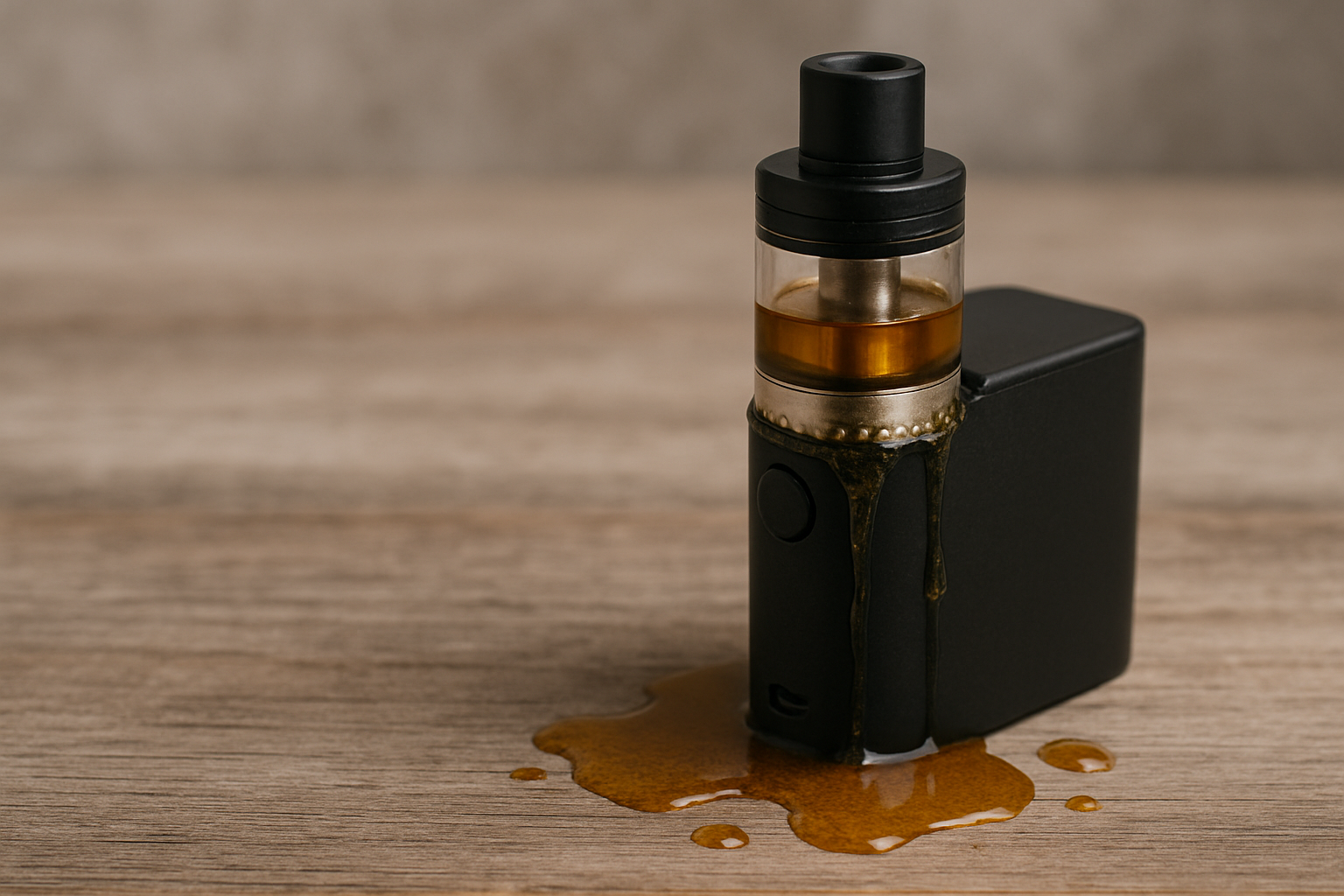A Complete Vape Tank Repair and Maintenance Guide for Leak-Free Vaping
Leaking vape tanks can be frustrating for both beginners and experienced vapers alike. Whether it’s a puddle of e-liquid on your desk, sticky vape fingers, or the constant hassle of cleaning your device, a vape leak doesn’t just waste your e-liquid—it can also damage your device and ruin your vaping experience.
The good news? Most vape tank leaks are completely preventable with proper vape maintenance, good habits, and the right equipment. This guide will help you understand why your vape tank is leaking e-liquid, how to fix vape leaks, and which leak-resistant vape tanks are worth investing in.
Quick Navigation
- Understanding Vape Tanks
- Common Causes of Vape Tank Leaks
- How to Prevent Vape Tank Leaks
- Choosing the Best Leak-Proof Vape Tanks
- Frequently Asked Questions (FAQs)
- Final Thoughts: Enjoy Leak-Free Vaping
Understanding Vape Tanks
To fix or prevent leaks, it’s essential to know how vape tank components work. A vape tank holds the e-liquid and delivers it to the coil for vaporization. When any part of this setup is misaligned or worn, leaks can occur.
Key Parts of a Vape Tank
-
Glass/Plastic Reservoir – Holds the e-liquid.
-
Coil – Heats the liquid to produce vapor.
-
O-Rings – Provide seals that prevent vape tank leaks.
-
Base – Connects the tank to your mod or pod device.
A clear understanding of these parts will make vape tank repair and maintenance easier.
Common Causes of Vape Tank Leaks
If your vape tank is leaking from the bottom or when lying down, here are the usual suspects:
1. Improper Coil Installation
A cross-threaded vape coil or loose installation can create gaps for e-liquid to escape. Double-check your vape coil installation to ensure a snug fit—tight, but not overtightened. Misaligned coils often cause flooded vape coils and wasted e-liquid.
2. Overfilled Vape Tank
Overfilling forces e-liquid into the vape airflow system, leading to leaks and spitting. Always leave some space for air pressure balance. This is one of the most common beginner vape problems.
3. Using Low-Quality or Wrong E-Liquid
Thin, high-PG e-liquids can cause sub-ohm tank leaking issues. Use high VG e-liquid for tanks to ensure proper wicking and consistency.
4. Worn O-Rings
Damaged O-rings break the seal and cause leaks. Check them often and replace them as part of your vape maintenance routine.
5. Incorrect Storage
A vape tank leaking when lying down usually happens when stored sideways. Always store your device upright to prevent e-liquid waste and residue buildup.
How to Prevent Vape Tank Leaks
Preventing leaks is simple once you know what to look out for.
1. Use Quality Replacement Vape Coils
Upgrade to high-quality vape coils designed for your specific tank model. Replace coils every 1–2 weeks for best results and stronger vapor production.
2. Proper Vape Tank Assembly
Ensure all parts are clean and properly aligned. Misaligned vape tank threading or components in box mod kits often lead to leaks.
3. Match E-Liquid to Your Setup
-
Sub-ohm vaping setup → Use thicker high VG e-liquid.
-
Pod systems or starter kits → Use a balanced 50/50 or 60/40 VG/PG ratio to prevent wicking problems.
4. Stay Within Recommended Wattage
Overpowering your coil leads to flooded vape coils and leaks. Check your coil’s specs for the best wattage for vape coils.
5. Regular Cleaning and Maintenance
Learn how to clean your vape tank properly using warm water and gentle drying. Replace vape o-rings regularly and keep an eye on any residue buildup.
Choosing the Best Leak-Proof Vape Tanks
If your current tank keeps leaking despite proper care, consider upgrading to one of these leak-resistant vape tanks:
-
Smok TFV18 Sub-Ohm Tank – Excellent airflow and durability for sub-ohm vaping setups.
-
Freemax M Pro 3 Tank – Designed for e-liquid waste prevention and consistent performance.
-
Voopoo UForce-L Tank – Features improved vape airflow systems and easy vape coil replacement.
Investing in these tanks ensures proper vape assembly, stronger seals, and a better overall vaping experience.
Frequently Asked Questions (FAQs)
Why does my vape leak when I fill it?
Because of overfilling or pressure imbalance. Leave air space and close airflow before refilling.
How often should I change vape coils?
Every 1–2 weeks, or when you notice reduced vapor production or flooded coils.
What causes a vape tank to leak?
Improper assembly, thin e-liquid, or worn vape o-rings.
How to store vape devices properly?
Keep them upright and away from heat—key for mod maintenance and nicotine device care.
What VG/PG ratio prevents leaks?
A higher VG ratio (70/30 or 80/20) reduces the risk of leaks in sub-ohm tanks.
Final Thoughts: Enjoy Leak-Free Vaping
Leaking doesn’t have to be part of your vaping routine. With proper vape maintenance, quality parts, and the right setup, you can enjoy consistent vapor, no mess, and a smoother vaping experience every time.
Whether you’re a beginner or an experienced vaper, knowing how to prevent vape tank leaks and maintain your gear can save you time, money, and frustration.
Join Our Vape Community!
If you found this guide helpful, subscribe to our newsletter for exclusive vape maintenance tips, gear reviews, and leak-prevention hacks straight to your inbox.
Got your own leak-fixing trick or question?
Share it in the comments section below — we love hearing from fellow vapers and learning from your experiences!
Together, let’s keep our tanks clean, our devices dry, and our vaping experiences smooth.


